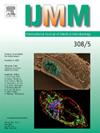Drug resistance of Mycobacterium tuberculosis in West Java, Indonesia
IF 3.6
3区 医学
Q1 MICROBIOLOGY
引用次数: 0
Abstract
Tuberculosis (TB) is currently one of the leading causes of infectious disease deaths globally, and Indonesia ranks 2nd in annual TB cases, below only India. Accurate TB diagnosis and detection of multidrug-resistant TB (MDR-TB) in real-world settings are crucial for prompt treatment and surveillance. We therefore compared multiple methods for TB detection and drug resistance profiling, including a cartridge-based nucleic acid amplification test (CBNAAT), line probe assay (LPA), and phenotypic drug susceptibility testing (pDST) with targeted long-read next generation sequencing (tNGS) and whole genome sequencing (WGS) on 133 patients in West Java, Indonesia. WGS enabled comprehensive phylogenetic analyses and insights into TB evolution and drug resistance patterns, but its low read counts limit practicality for clinical use. Comparatively, tNGS demonstrated superior sensitivity and specificity, effectively identifying resistance profiles across multiple first-line and second-line drugs with rapid turnaround times. Notably, when compared to LPA, tNGS showed positive percent agreement (PPA) values of 100 % for rifampicin, isoniazid and ethionamide, and an overall agreement of 94 % across multiple drugs. In comparison with CBNAAT, the tNGS PPA for rifampicin remained high at 91 %. The results show that long-read tNGS technology offers a robust tool for enhanced TB treatment and surveillance, ensuring both timely detection and enabling effective tracing through in-depth genetic analysis. The findings significantly contribute to the development of strategies for TB control and management, especially in regions with a high burden of TB cases.
印度尼西亚西爪哇结核分枝杆菌的耐药性
结核病目前是全球传染病死亡的主要原因之一,印度尼西亚在每年结核病病例中排名第二,仅次于印度。在现实环境中准确的结核病诊断和检测耐多药结核病(MDR-TB)对于及时治疗和监测至关重要。因此,我们比较了印度尼西亚西爪哇133名患者的多种结核病检测和耐药分析方法,包括基于卡带的核酸扩增试验(CBNAAT)、线探针测定(LPA)和表型药敏试验(pDST),以及靶向长读下一代测序(tNGS)和全基因组测序(WGS)。WGS能够进行全面的系统发育分析,并深入了解结核病的进化和耐药模式,但其低读取计数限制了临床应用的实用性。相比之下,tNGS表现出更高的敏感性和特异性,能够有效识别多种一线和二线药物的耐药谱,周转时间短。值得注意的是,与LPA相比,tNGS对利福平、异烟肼和乙胺的PPA值为100% %,多种药物的总体一致性为94% %。与CBNAAT相比,利福平的tNGS PPA仍然很高,为91 %。结果表明,长读tNGS技术为加强结核病治疗和监测提供了一个强大的工具,确保及时发现并通过深入的遗传分析实现有效追踪。这些发现显著有助于制定结核病控制和管理战略,特别是在结核病病例高负担地区。
本文章由计算机程序翻译,如有差异,请以英文原文为准。
求助全文
约1分钟内获得全文
求助全文
来源期刊
CiteScore
9.70
自引率
0.00%
发文量
18
审稿时长
45 days
期刊介绍:
Pathogen genome sequencing projects have provided a wealth of data that need to be set in context to pathogenicity and the outcome of infections. In addition, the interplay between a pathogen and its host cell has become increasingly important to understand and interfere with diseases caused by microbial pathogens. IJMM meets these needs by focussing on genome and proteome analyses, studies dealing with the molecular mechanisms of pathogenicity and the evolution of pathogenic agents, the interactions between pathogens and host cells ("cellular microbiology"), and molecular epidemiology. To help the reader keeping up with the rapidly evolving new findings in the field of medical microbiology, IJMM publishes original articles, case studies and topical, state-of-the-art mini-reviews in a well balanced fashion. All articles are strictly peer-reviewed. Important topics are reinforced by 2 special issues per year dedicated to a particular theme. Finally, at irregular intervals, current opinions on recent or future developments in medical microbiology are presented in an editorial section.

 求助内容:
求助内容: 应助结果提醒方式:
应助结果提醒方式:


